Frame
Reinventing a digital publication's product for scalability and engagement




brief
As a startup journalism publication, Frame was producing innovative multimedia concepts, but didn’t have a scalable product.
The challenge was to maintain their identity and product principles while creating a scalable solution.
My Contribution
Led a product redesign through research with the founders, their audience, and into the journalism landscape.
Outcome
Bridging software solutions with a brand refresh and a new UX, we created a Webby-winning article form that gained 20% engagement and reached an audience of 1.5+ million readers globally.
Role:
Design Lead
Functions:
Product Strategy, UX Research, Product Design, Journalism
Duration:
18 months
Project Link
Example articles that Frame was previously producing - both animated videos hosted on the web, spawning a few issues:
Not Web Native
Unresponsive Design
Resource Intensive
Challenge
Maintain Frame's core principles while reinventing its product to be both scalable and web friendly.
Goal
Help Frame launch a refreshed publication bringing to life their editorial vision.
Four directions for research:
Frame
Frame’s readers
Journalism landscape
Readership trends
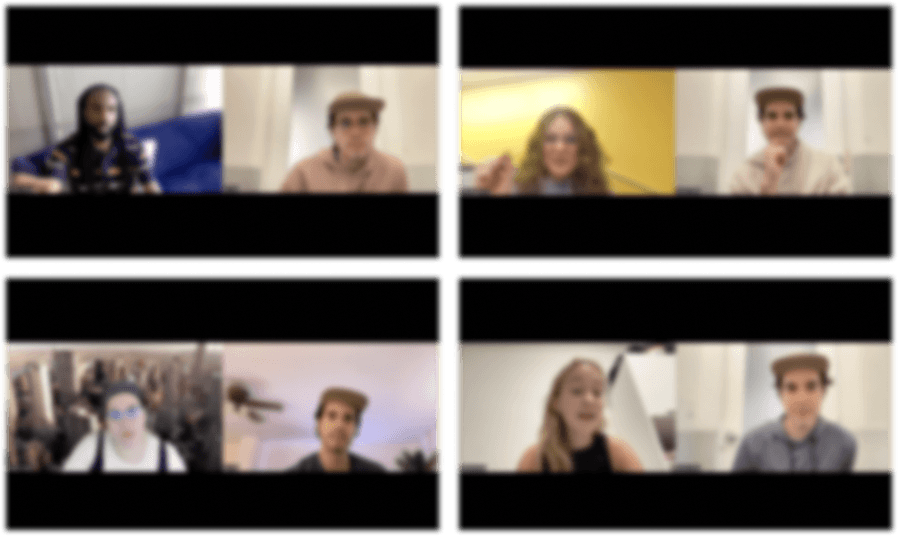
Readers were most drawn to Frame's visual storytelling, while noting that news often felt overwhelming or discouraging.
Journalists, meanwhile, looked for more expressive forms of storytelling to engage readers.

Artifacts from early workshops focusing on Frame's position in the journalism landscape and the founders' vision for growth.
Prioritizing multimedia forms and interactivity, the team sought to develop its own innovations in journalism and technology.
Secondary research highlights:
Reuters 2023 Digital News Report:
- 63% of news readers aged 18-24 prefer to read their news, compared to 18% who prefer to watch
- 56% used a smartphone for news in the last week in 2022, up from 31% in 2013.
- 38% of news readers sometimes or often actively avoid the news, up from 29% in 2017.
"News-avoiders describe news as unpleasant, untrustworthy, and inaccessible."
A few patterns emerged across Frame, its readers, and the wider news ecosystem:
- Readers wanted visual and mobile-first formats, yet still preferring reading to watching
- Frame wanted to be innovative, and could build its own software solutions
- Systemic issues in journalism persisted, and while they might not be solved, they shaped the intentions behind our design
Takeaways:
Emphasize multimedia
Retain Frame’s dynamic and visual style, while refreshing it to become more familiar.
Rethink pages
Leveraging what digital devices do best - layering visuals, motion, and interaction - create an engaging reading environment that adds context without spiking reading times.
Progressive disclosure, applied to text.
Address concerns from newsreaders
We looked to build an approach combining human-centered storytelling with artful, expressive design to make difficult stories more resonant.
Interactivity became a bridge: keeping experiences concise while offering readers context that made stories feel clearer, more transparent, and easier to follow.
Balancing the above, we built and tested prototypes, refreshed Frame's branding, and developed two connected web apps: one for readers to view articles, and the other for journalists to create them.
Frame's article:
In four different serialized verticals:
Responsive across screen sizes:
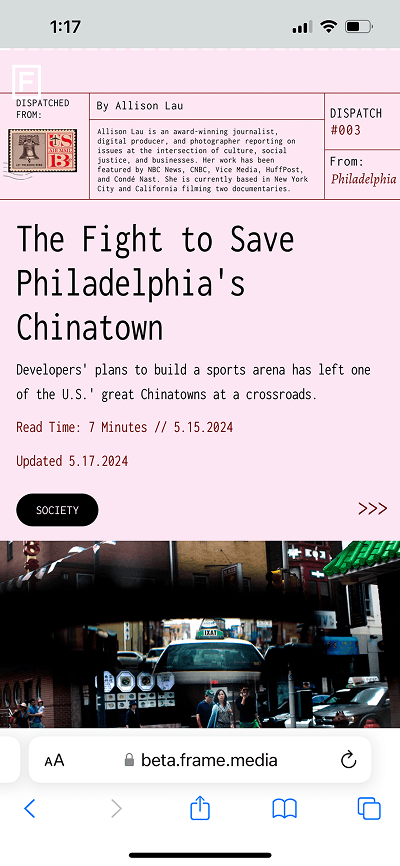
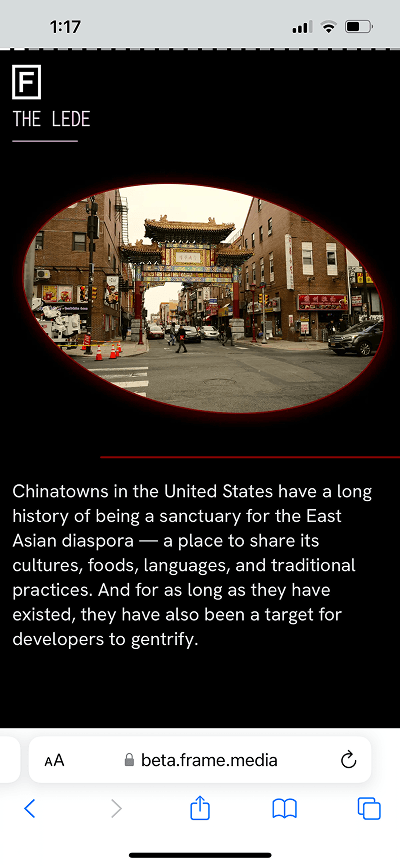
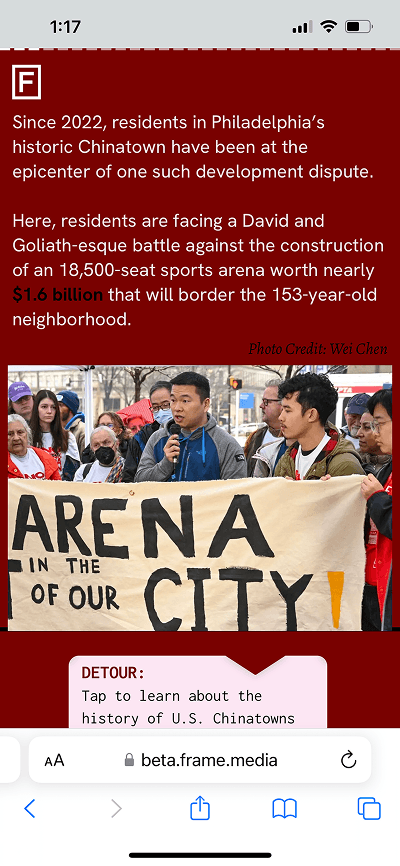

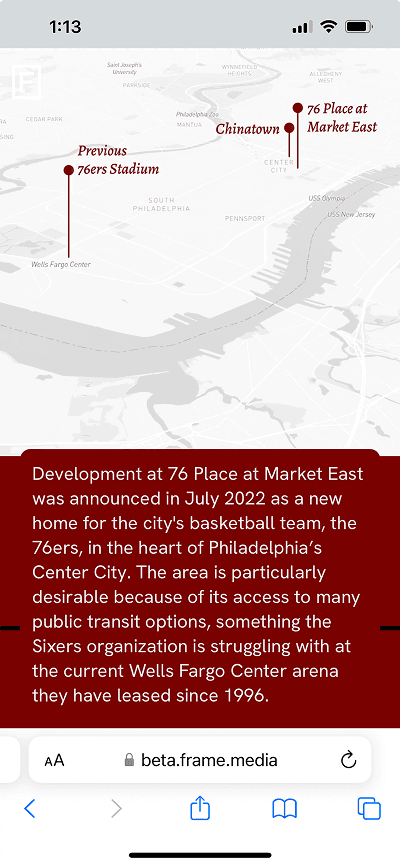
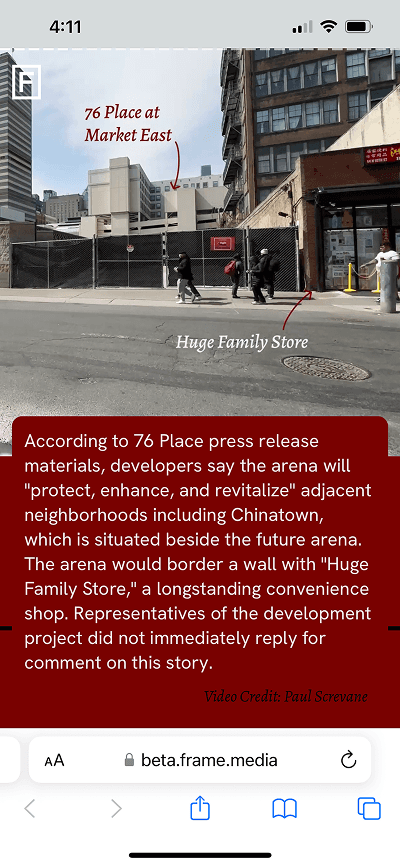
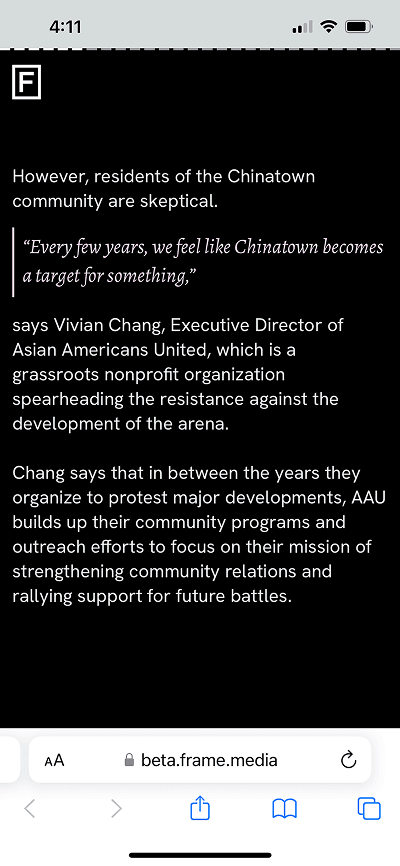
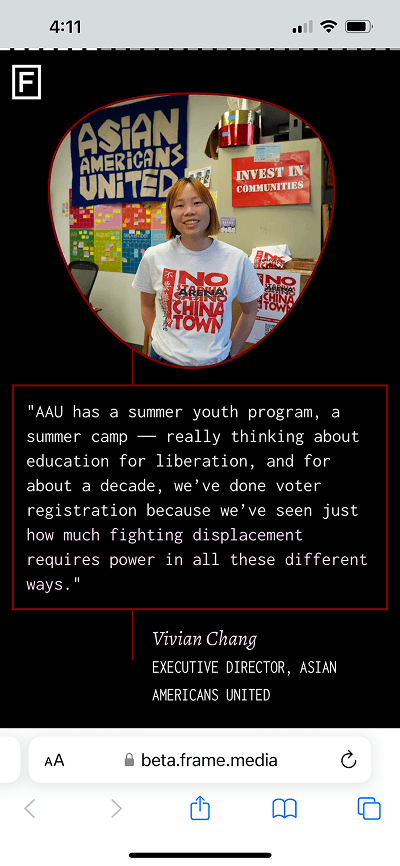
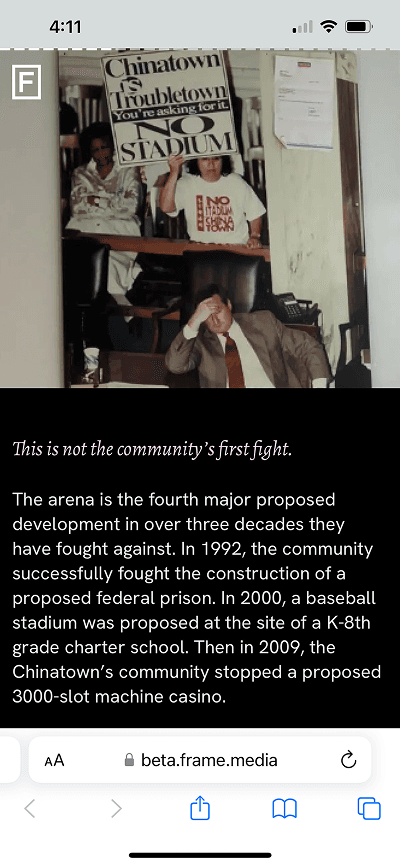
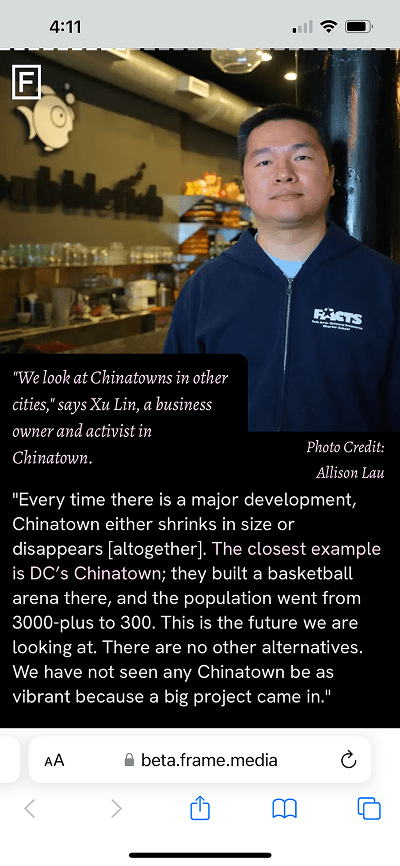

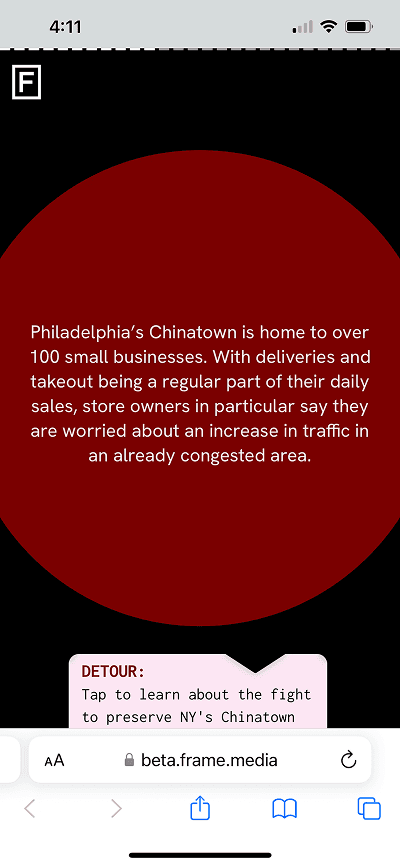
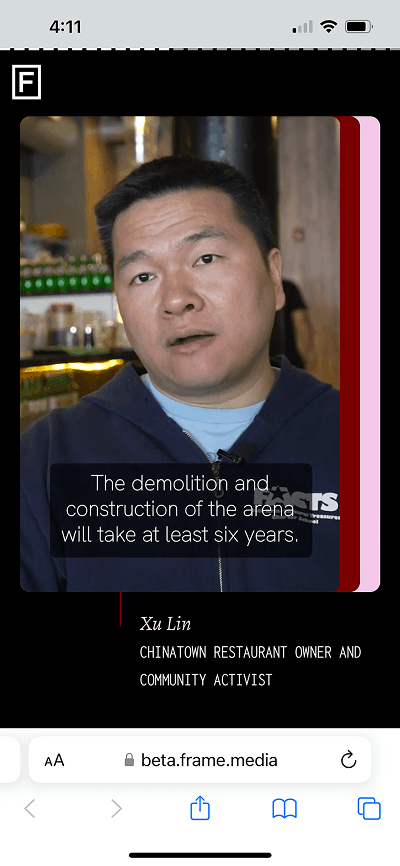
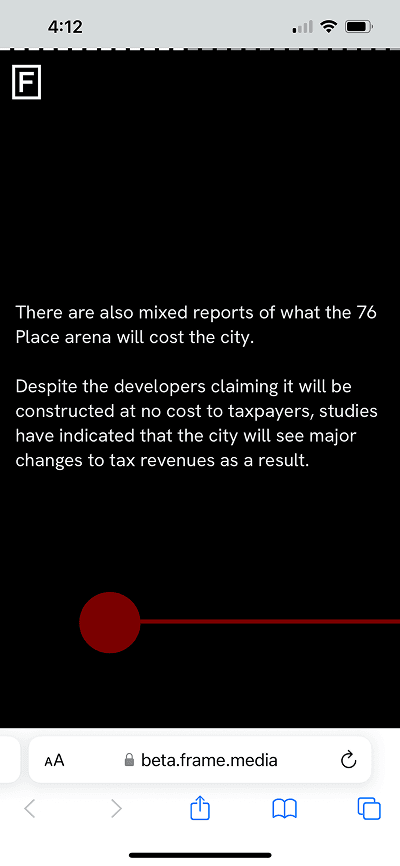
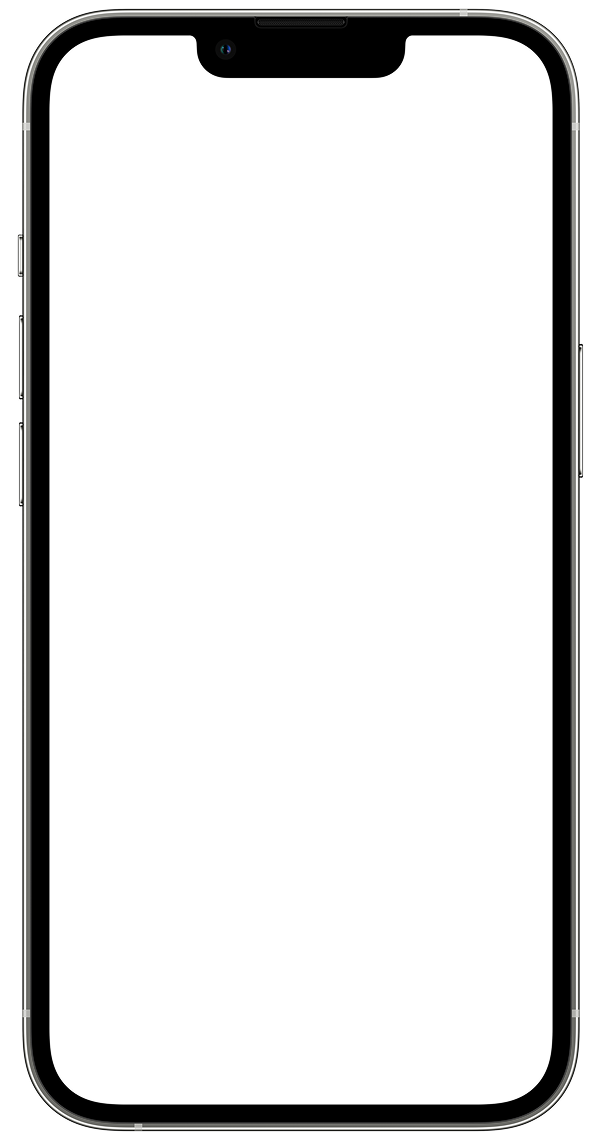

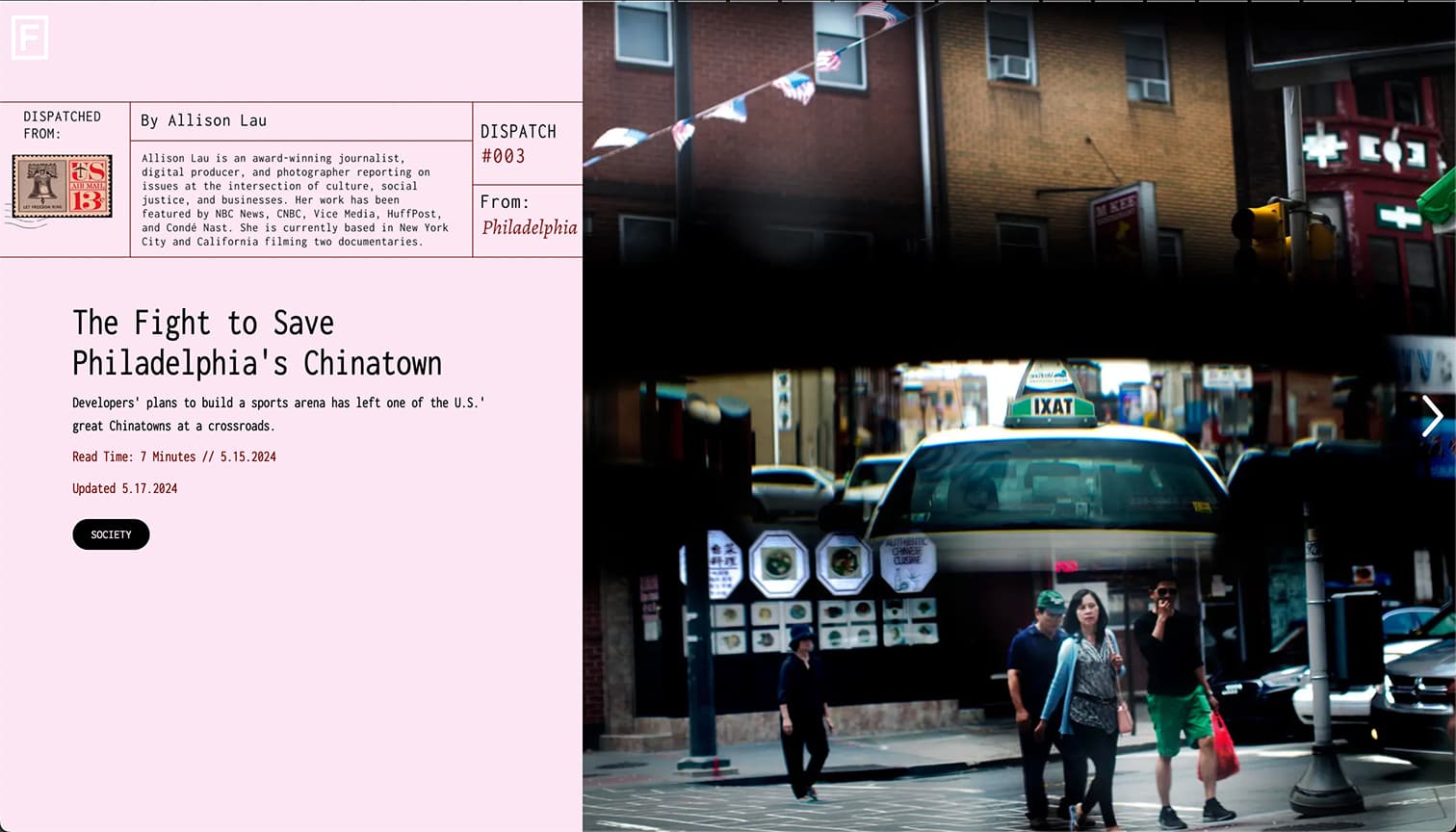
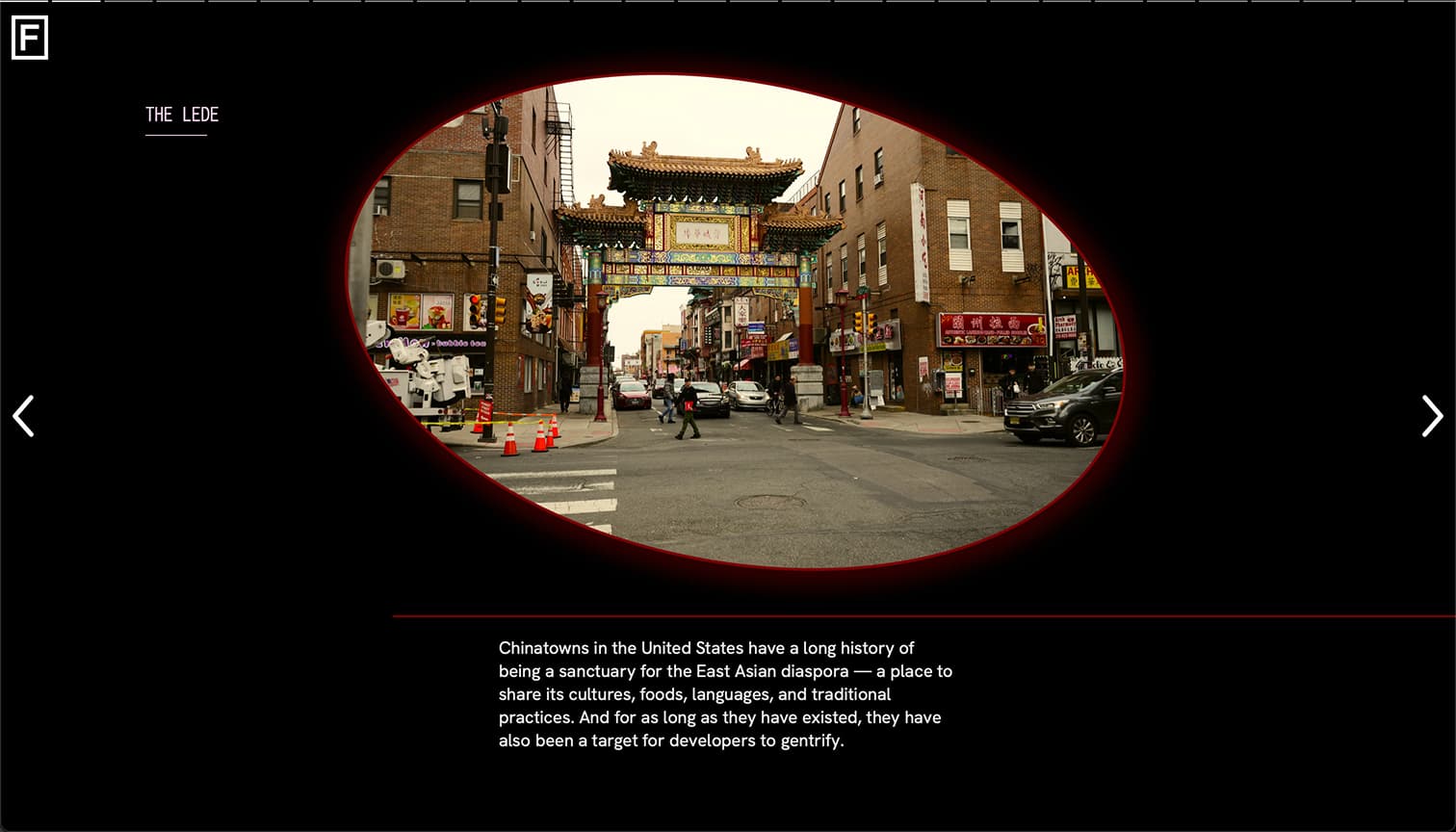
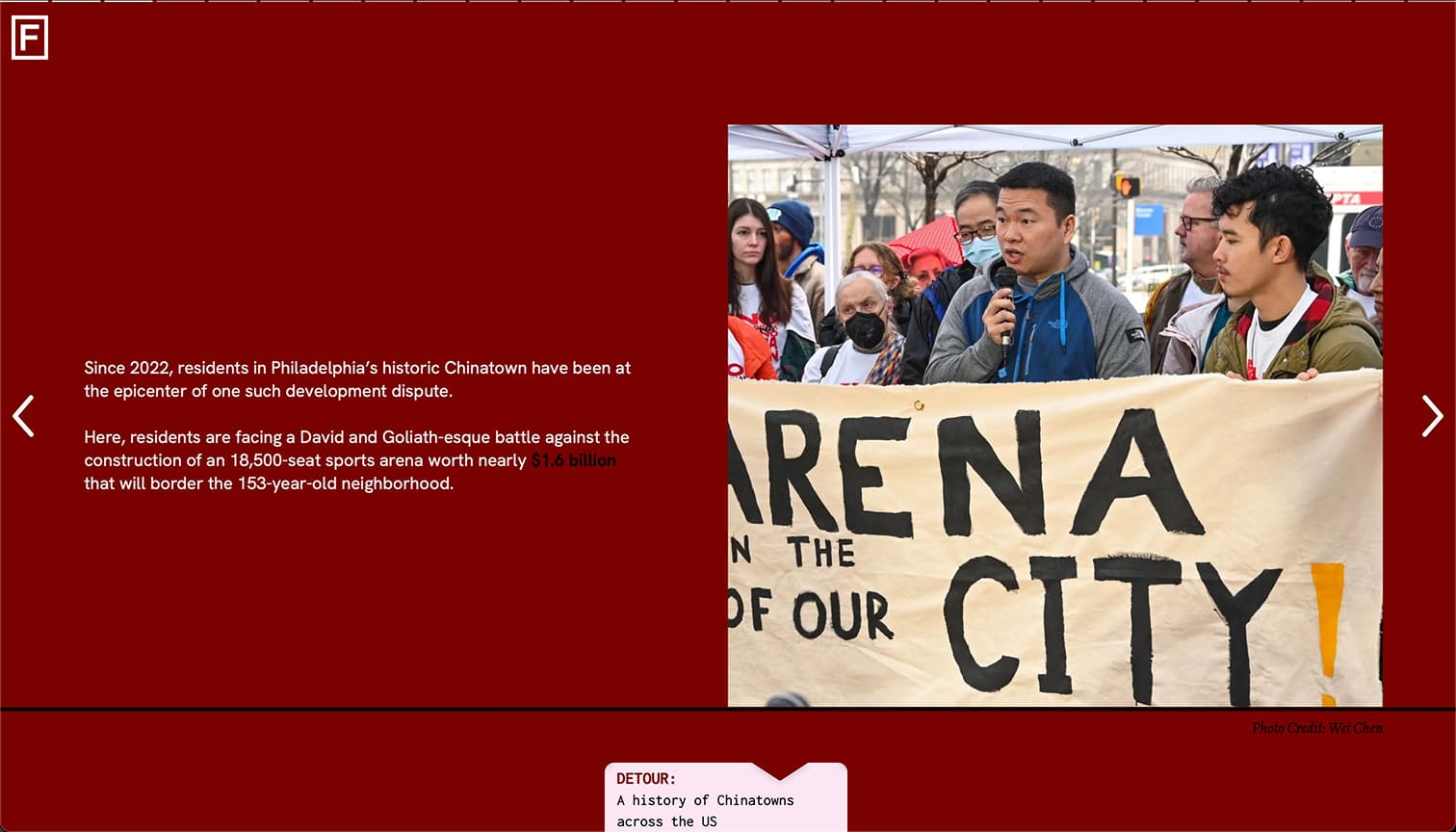

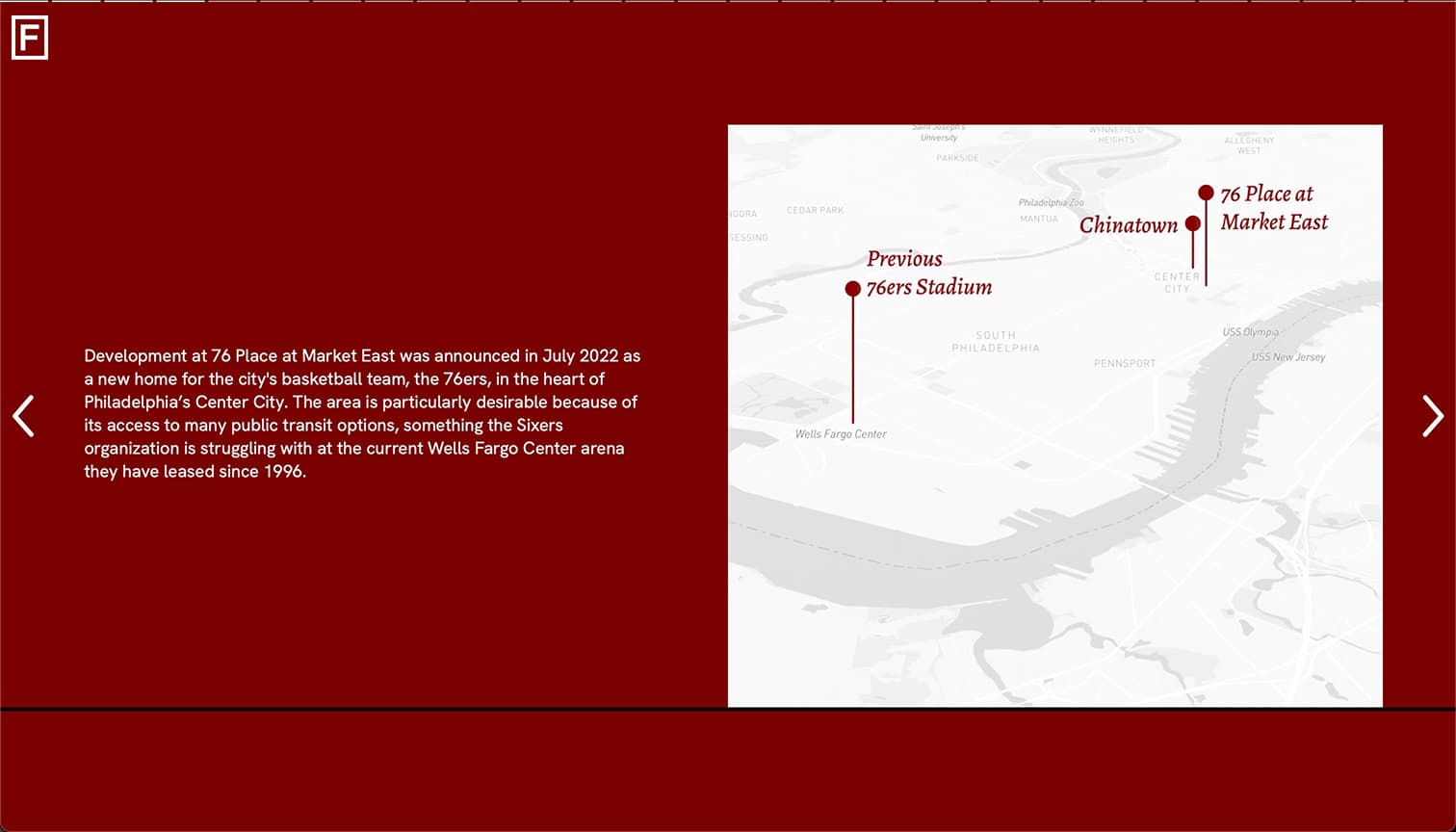
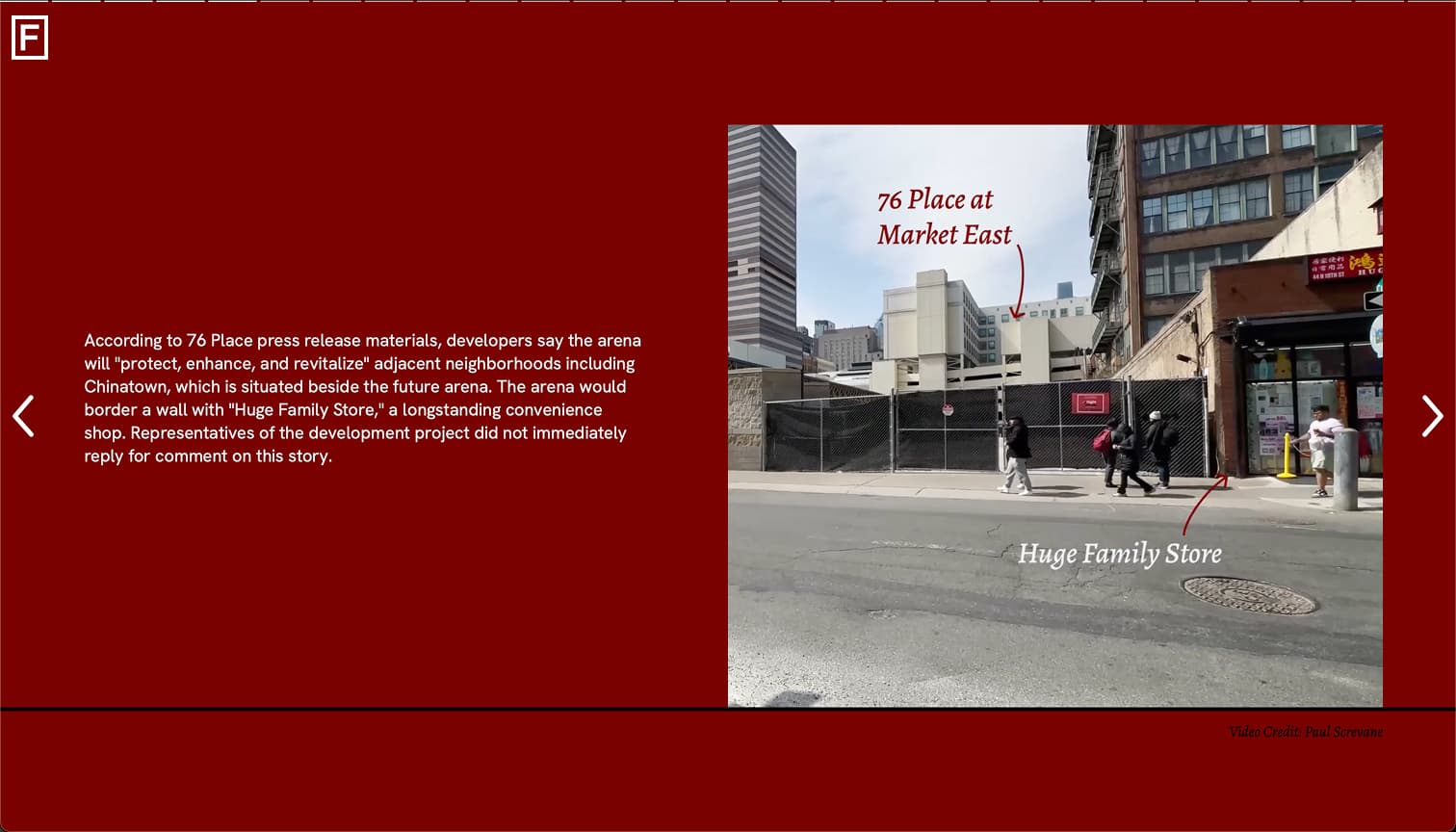
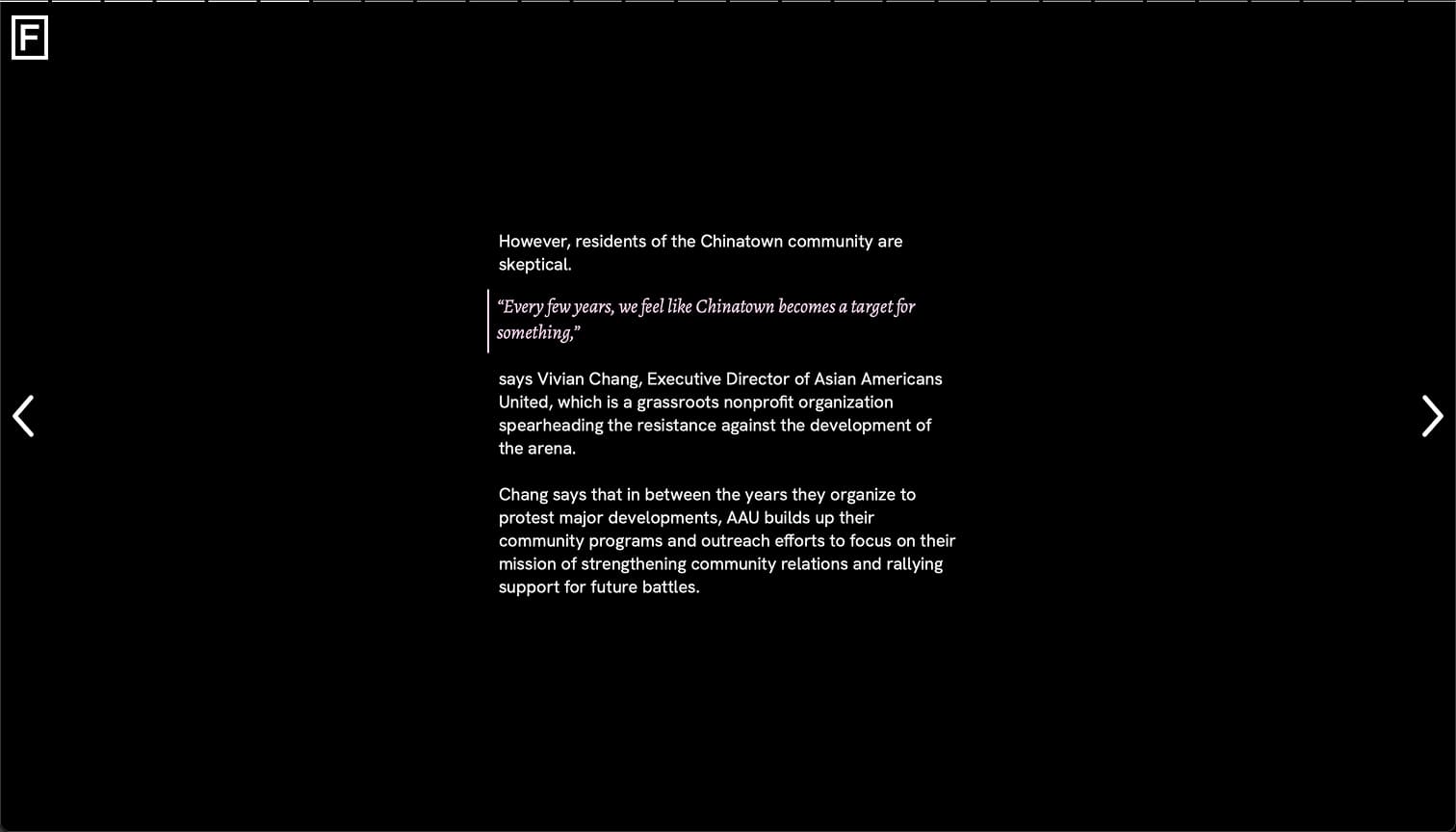
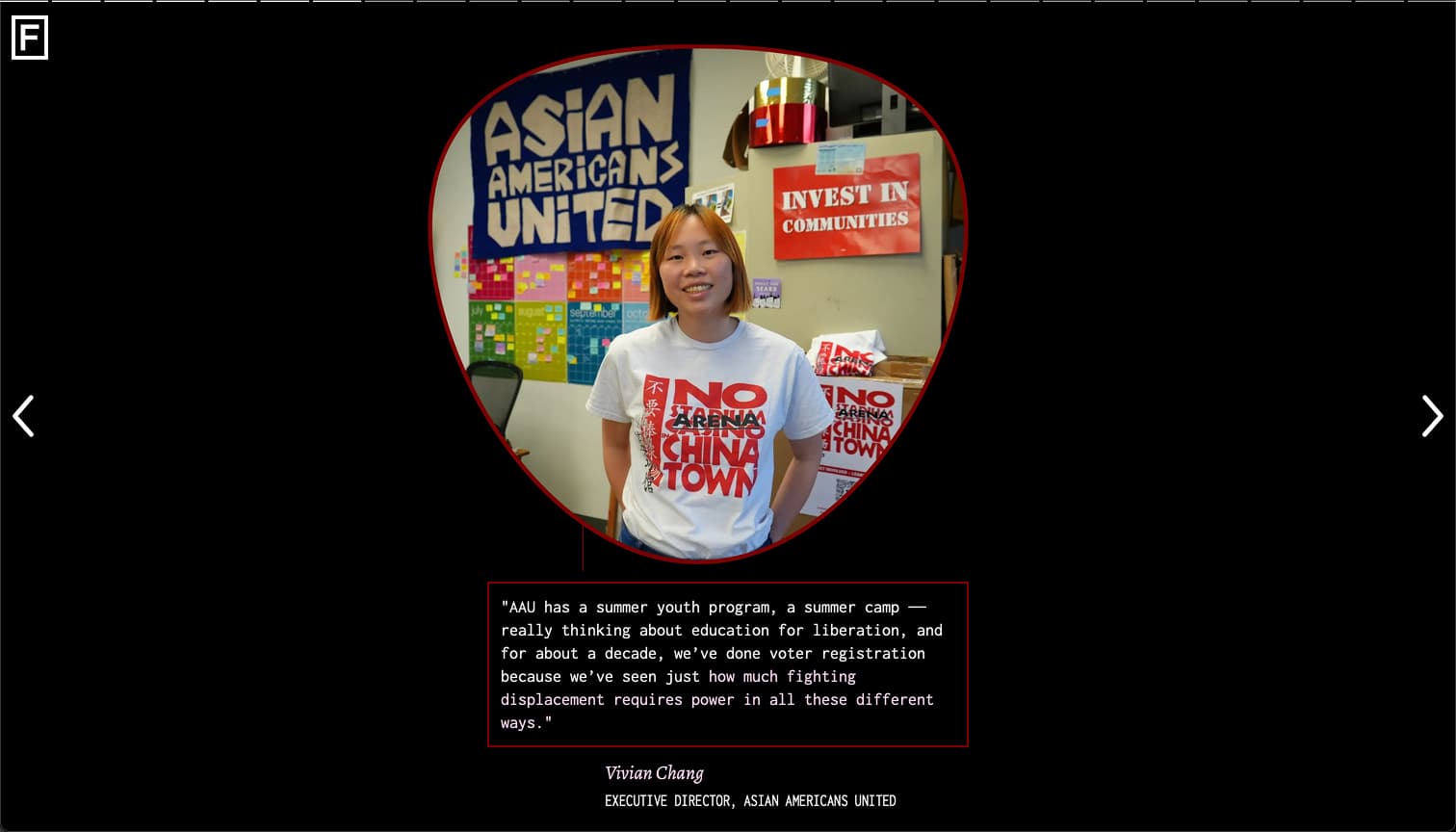
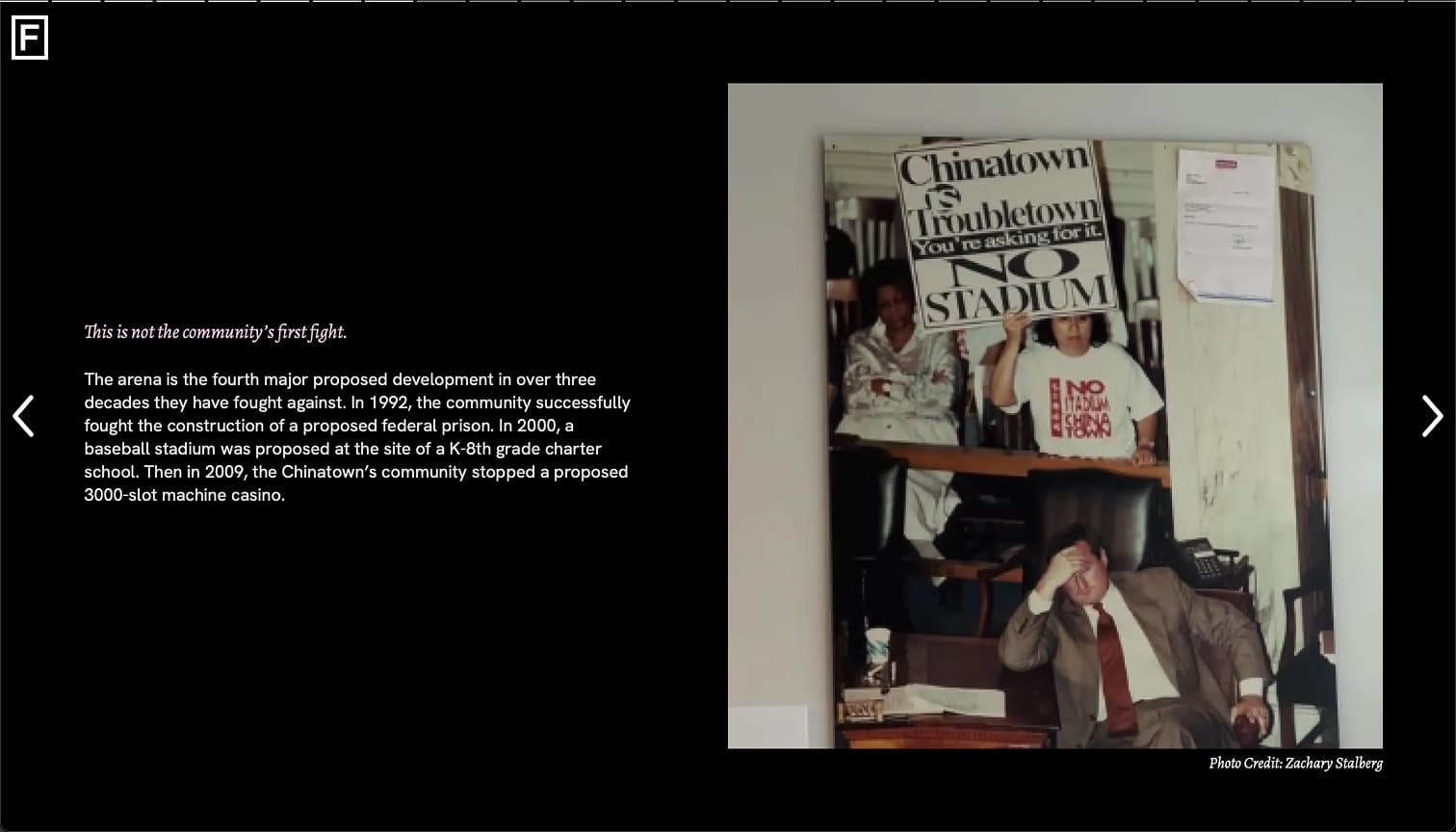

Using "Detours" as a core interactive feature:
Created to allow readers to access supplemental context without losing their place in the main narrative, while keeping reading times low.
See how a journalist used one here ➡️ ⬇️
Post-launch, we continued improving both applications, and my work increasingly took the form of designing the articles, producing and animating assets for them, and a range of editorial operations in collaboration with fellow journalists.
All of Frame's articles can be read here.
outcome
Reader Engagement: +20% compared to the industry standard, measured by time in article and completion percentage
Audience: 1.5+ Million readers globally
And we won a Webby in News and Politics for our work!
The product solved the web-native concerns and preserved a visually expressive format, but it wasn’t as interactive as envisioned and relied on still-developing software. Features for greater interactivity, animation, and efficiency were roadmapped but not yet implemented.


















